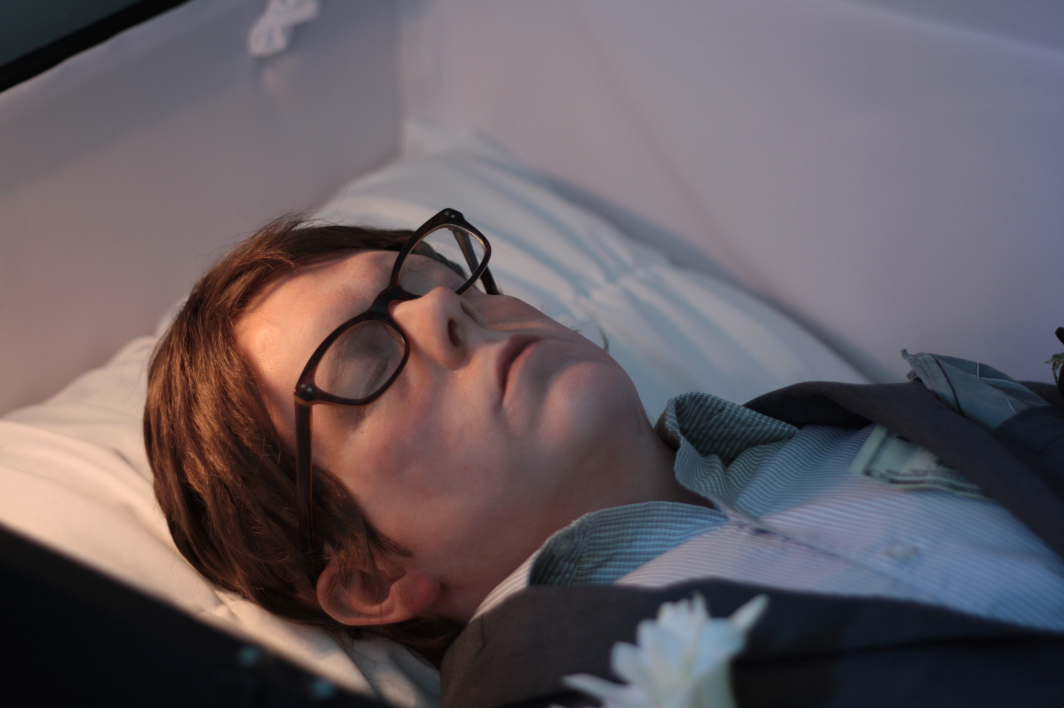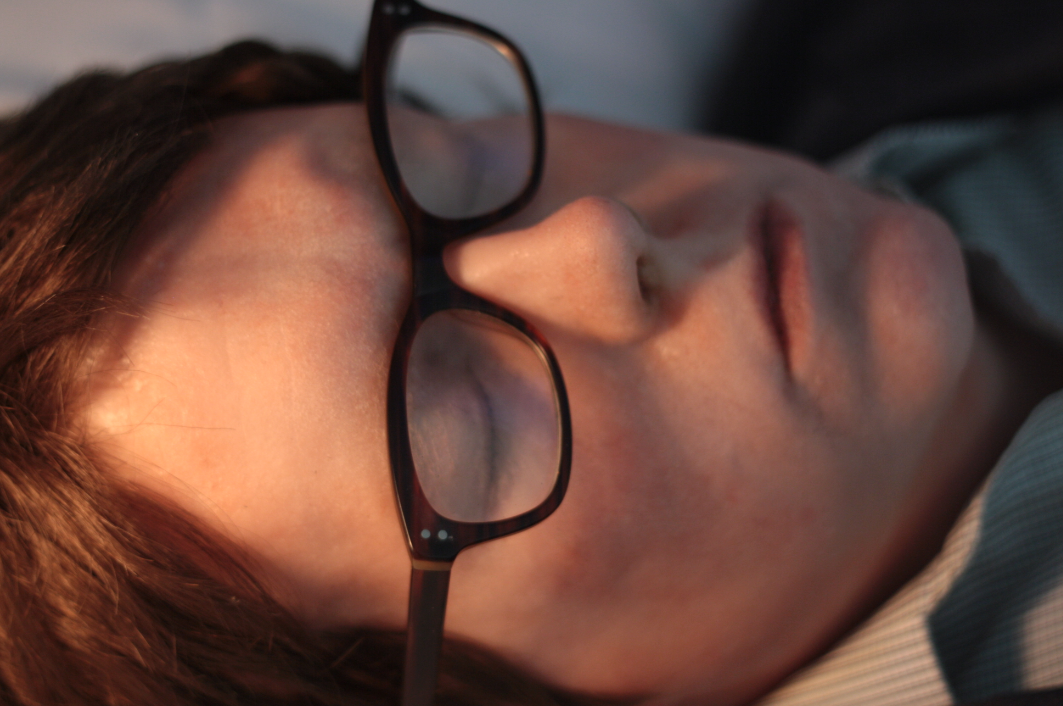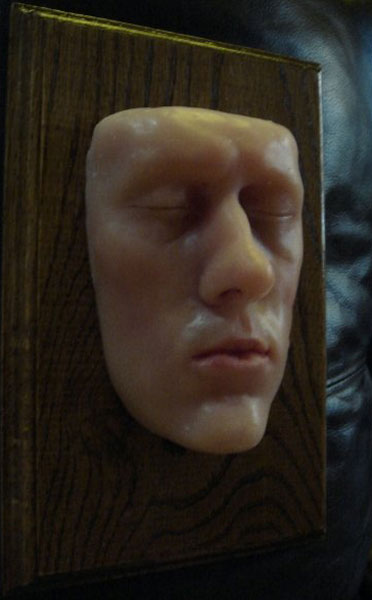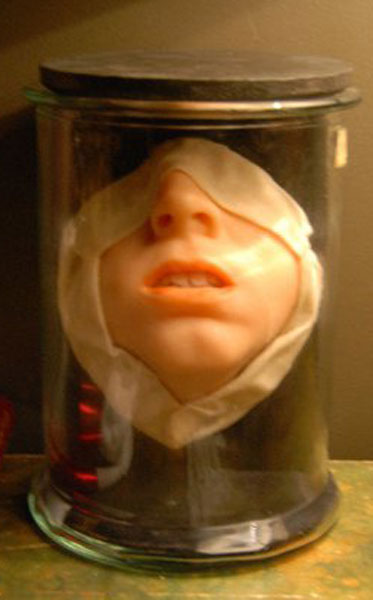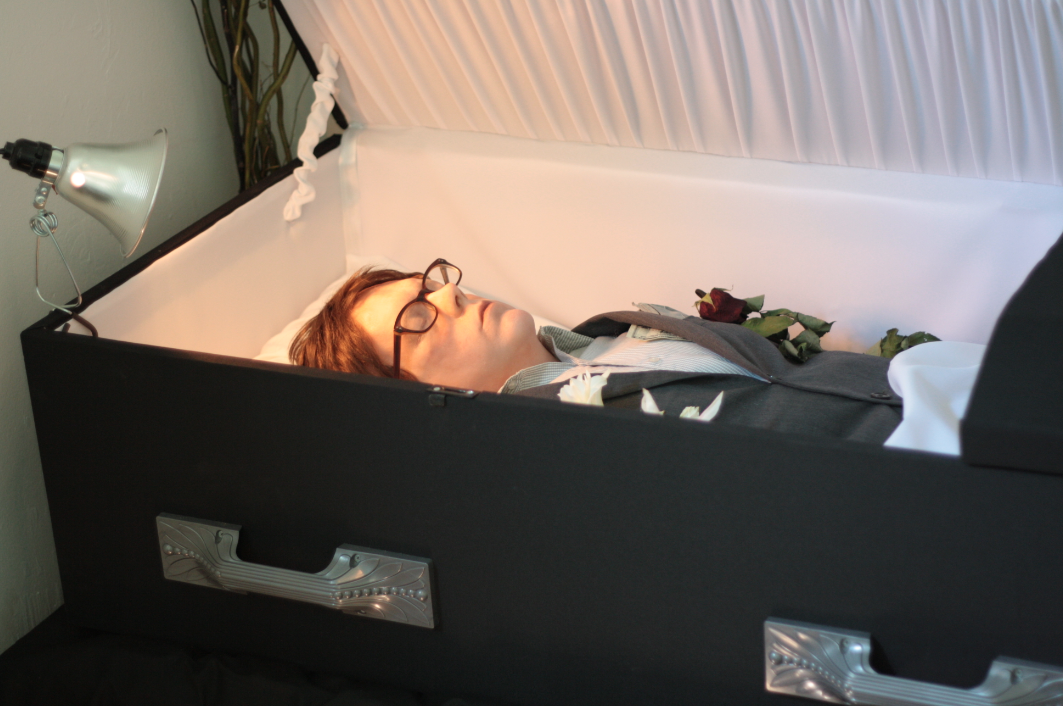On September 21, 2012, Sala Diaz Gallery in San Antonio held a funeral. A 10-watt bulb dimmed the normally bright white walls of the space, which were now covered in the shadows cast by rows of chairs lined up facing a modest cloth covered casket. Inside the casket laid a wax replica of the artist Jeremiah Teutsch, who sculpted his own likeness out of wax and silicon. “Just remember, that death is not the end,” sang Nick Cave over the rooms PA system while visitors walked by the casket and peered in at someone who was also standing in the same room as them.
There is a long tradition of staging your own death, be it for legal reasons (Ken Kesey), therapy (fake funerals of South Korea) or for a change of pace (pseudocide). When I spoke to Jeremiah over brunch in San Antonio, he told me his reason for throwing himself a funeral began as a way to activate the entire gallery space and not spend a lot of money. Funeral expenses might add up for some, but Jeremiah only spent $250. He was loaned a casket by a local funeral director, already owned a suit and kept the number of flower arrangements to just two, which he bought at the grocery store. His greatest expense was the materials he used to mold his face, a prototype of which he proudly pulled out of his satchel to present to me over our huevos motuleños. It was the lower half of his face; nose, lips and chin looking like they could convincingly eat the plate of food in front of them. The likeness was uncanny, making me wonder about the reaction he received from the piece.
“Well, I got a lot of side comments about helping people fake their own death,” he said, with a smirk before quietly admitting, “and there were some people that started crying.” The guests weren’t told about the subject of the piece before they arrived, so for many of his friends, walking into his funeral was a shock. This was part of his point,
“As an artist, I elicit responses. One piece I made was a ‘bad room’, the entrance was series of hallways the zig-zagged for a while, then the ceiling dipped low and a strobe light went off to add to the distraction.” He appreciates experiential art most, pieces that engage all the senses, they way his funeral piece, entitled Momento Murray, did. (“I thought it was funny; I actually hate show titles,” he said of the name). The visual of his body was paired with mournful music, the scent of funeral flowers and of course, feelings of loss and sadness.
“Some people actually thought it was me, they thought it was a performance piece,” he said, adding that even images of the wax Jeremiah looked too real for some. “My mom saw pictures of the piece of the internet and it got her upset, she was like ‘you’re not supposed to die before me!’”
To prepare for his show, Jeremiah spent time at the Mütter Museum in Philadelphia, where his girlfriend at the time was an intern.
“I’d go to see the basement and wet specimen’s lab and talk to the curator about the collection of wax models.” His degree is in drawing and painting, but moved into sculpture after becoming interested in anaplastology. “I made two small wax medical models, one was in a jar, and one was mounted to wood.”
Momento Murray was also a wax sculpture of his face-a sort of death mask that he made from a cast of his own face. He used batting to stuff the body. His work is reminiscent of provocateur artists like Maurizio Cattelan whose sculpture Now features a lifesize JFK barefoot in his casket or Sleepwalker, by Tony Matelli a life sized wax sculpture of a man in his underwear hazily walking through Wellesley College campus. It’s the later that Jeremiah feels more akin to, Matelli’s work causing a more public reaction both with its extreme life-likeness as well as placement: an all-women’s campus. Transforming a gallery into a funeral parlor forces people to confront their own fears of loss and death, something he himself was working through when he created the piece.
“I really thought I was going to die when I was 28,” he said, “I called the ambulance on myself after a panic attack because I was so sure I was going to die.” Now that he’s seen himself experience his final goodbye and has let his friends know what he wants, Jeremiah says he feel comfortable with it. “I’m considering doing this every couple of years, making changes to reflect how I’ve changed.”
It’s an interesting project to consider, to practice having your funeral every couple of years until you get it just right. A couple of tweaks Jeremiah has already decided on are a different casket-he prefers the plain coffin style to ornate caskets-and enjoys the idea of possibly having his corpse stand up, as has been done recently. It certainly adds for shock value; however Jeremiah has got a deeper sensibility for his work.
“I tried very much to make my face look slightly damaged,” Jeremiah said of his wax corpse. “We have such a funny perspective on death in this country; we see it so much, death on TV, movies, but yet they (actors) still look alive.” From this perspective, the corpse-standing-up-pose could be read as a sort of satire about American’s misunderstanding of what death actually looks like.
Until then, wax Jeremiah stays with the real Jeremiah at his studio in San Antonio, like an incorruptible saint of death acceptance. He’ll surely be recognized at the next funeral he appears at, giving death a more familiar face until the time when it no longer needs to wear a mask.


